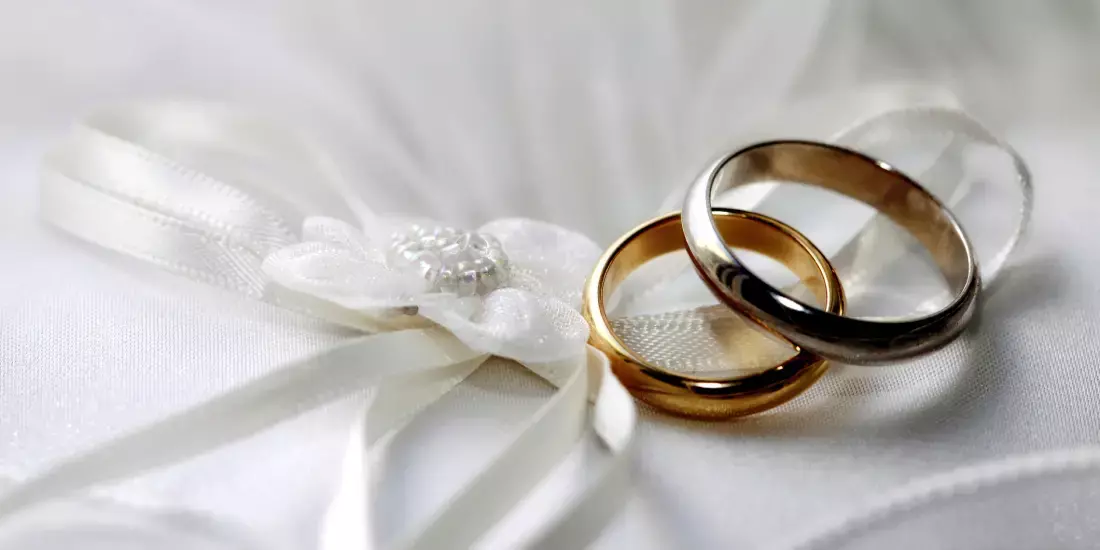How Do I Claim a Marriage Tax Allowance Refund?
- Advice on claiming marriage tax allowance
- Eligibility and qualifying criteria
- How much you can receive when you apply for marriage allowance
It’s believed that around 2.4 million couples miss out on the benefit of marriage tax allowance, which entitles you to a tax break every year. Since 2015, couples have been making use of this relief through the marriage allowance. It can also be backdated, giving you and your spouse or civil partner refund for up to the past four years, equalling £1,258.
This article will discuss what the HMRC marriage tax allowance is, how much you could be entitled to and how to go about claiming it. It will also look at what happens after you opt to transfer your marriage allowance to your partner. The most basic rule is that you must be married or in a civil partnership. Just living together doesn’t qualify.
Ready to claim back marriage tax? Use our online eligibility checker to see if you qualify. It only takes a minute.

What's On This Page?
Click the links below and head straight to a specific section of the article.
What Is Marriage Allowance?
Acting as a household saving between a married couple or those in a civil partnership, marriage tax allowance is a way of reducing your household’s taxable burden. It works by making use of your personal allowance and effectively transferring a portion of it to your higher earning partner.
For the avoidance of doubt, it is most effective in households where only one of you pays tax. This is because you could be worse off if you apply for marriage tax allowance when you’re both taxed on your income. By shifting the personal saving bands around, you may end up paying more.
Naturally, not everyone will be able to claim this as it focuses on the benefits of marriage. Equally, you cannot claim if you’re a high earner as it’s designed to help lower income households who are paying the basic 20% rate. The maximum relief you can receive in a year is £252.
Cohabitation
Some people will argue this is discrimination against higher earners or unmarried couples. While marriage tax allowance isn’t applicable for everyone, you can only apply for it if you are married or in a civil partnership. You cannot claim as a couple just by living together. The reason behind this is that the government views marriage very highly and the system aims to promote a stable family household.

Personal Allowance
Everyone is entitled to a personal allowance of £12,570, which is what you can earn tax-free on an annual basis. The marriage tax allowance simply lets you transfer £1,260 of this to your husband, wife or civil partner if they earn more than you do. This effectively reduces the amount the higher earner is taxed, giving you a saving, which is how you receive the money.
Backdating
As with all tax claims, it’s possible to backdate these for the last four tax years. Providing you were eligible for these previous years, you will receive a lump sum based on the total amount you are eligible for. Once applied for, future payments for marriage tax allowance are seen as a reduction in your household’s tax bill.
Qualifying Criteria to Transfer Marriage Allowance
Not everyone will be eligible to apply for marriage tax allowance. It also depends on when you and your partner were born.
In order to transfer any of your personal allowance to your partner, all of the following must apply:
You are married or in a civil partnership
One individual will have to be a non-taxpayer, i.e., earning less than £12,570 a year
The other individual must be paying income tax at the basic rate of 20%, i.e., earning less than £50,270
You and your partner were born after 6th April 1935
As long as one partner doesn’t pay tax and the other pays 20%, you will qualify for marriage tax allowance. It’s only the partner who isn’t taxed that can apply.
The biggest benefit you can receive is if the non-paying tax partner earns less than £11,310. If you apply for the allowance when you earn more than this, you will also have to start paying income tax.
If either partner was born before 6th April 1935, you can apply for Married Couple’s Allowance instead.
Can I Apply If My Partner Earns Slightly More Than £50,270?
If your partner is just in the higher rate 40% band, you are still unable to apply for marriage tax allowance. This is because the process would bring them back into the basic rate band, essentially saving 20% on their taxable income. To be able to qualify, the higher earner must earn less than this threshold.
How Much Can I Receive?
For the current year, the marriage tax allowance equates to £252. While this is almost £1,000 away from the £1,258 mentioned earlier, it will add up if you’re able to backdate the claim. You can backdate the HMRC marriage tax allowance by up to four years, giving you slightly different amounts for each qualifying year.
The previous high was £1,256, but the amounts have slowly gone up over the years.
The amounts you can receive if you transfer your marriage allowance for previous years are as follows:
2023/2024 - £252
2022/2023 - £252
2021/2022 - £252
2020/2021 - £250
Including the current year, backdating your claim for four years gives you the magic £1,258. If you backdate, this is usually paid as a lump sum. Once applied for, you will automatically receive the marriage tax allowance every year through a reduction in the amount paid to HMRC.
Can you still claim marriage allowance if you’re in a civil partnership?
How to Claim Marriage Tax Allowance

Now that you know what the marriage allowance is and how much you can receive, the most important question is how to go about claiming it.
You have a couple of different avenues available to you: claim on the government website or use a claims management company to process your marriage tax allowance claim on your behalf. Be aware that the person who doesn’t pay tax will have to apply for the marriage allowance.
Claim Through a Claims Management Company
You may not have enough time on your hands to submit your application yourself. It could be worth your while for a claims company to handle the marriage tax allowance claim on your behalf.
Since these kinds of companies specialise in managing claims throughout the year, they can deal with all the necessary paperwork and let you know how much you are entitled to.
A qualified and experienced third party will be in touch to help process your claim and deal with HMRC for you.
The top reasons for using a claims management company to process your marriage tax allowance are:
You don’t have the time to process the claim yourself
The companies are experienced in processing all types of claims
Can produce a result more quickly
Claim Through the Government Website
There are a few steps you’ll need to follow before you can claim marriage tax allowance yourself. The easiest and quickest way is to claim online.
You’ll need to register for the Government Gateway, or have your ID and password handy if you’ve previously signed up
You’ll also need both your National Insurance number and that of your partner
To register on the Government Gateway, you will need to confirm your identity, which requires two of the following documentation:
Valid UK passport
UK photo driving licence
A payslip from the last three months or a P60 for the last financial year
Details of a tax credit claim
Self Assessment return details
Credit record information
If you are unable to register for the Government Gateway, you can claim the marriage tax allowance through a Self Assessment or by writing to HMRC. Alternatively, a claims management company can do all this for you.
What Happens Once A Marriage Tax Allowance Claim Has Been Made?

Maximise Your Returns
If you’ve made a claim for marriage tax allowance and have backdated it for the years that you qualify, you will generally receive up to £1,258 as a lump sum. If you apply before the end of the current financial year, you can make a claim on a financial year that will become otherwise unavailable, so there’s never a reason to delay your claim.
No Need to Reapply
Luckily, once applied for, you do not have to reapply for the HMRC marriage tax allowance every subsequent financial year. The tax code for the higher earner will be updated or it will be updated when they next fill out a Self Assessment return (depending on whether they are self-employed or not). After you transfer your marriage allowance to your partner, it will remain on your record until you cancel it.
Cancelling Marriage Tax Allowance
If you no longer wish to make use of the marriage tax allowance, as circumstances have changed and you’ve both become taxpayers, for example, you will have to contact HMRC and ask to cancel it. This will also be the same if you divorce or one of you passes away. In the instance where one of you dies, the marriage allowance will apply until the end of the financial year in which you qualified.
Did you know there are several tax benefits of marriage for UK residents?
Related articles

What Martin Lewis Has Said About Marriage Tax Allowance

Are Married Couples Taxed Separately in the UK? The Tax Benefits of Marriage

Retirement and the Marriage Allowance

What You Need to Know About Marriage Allowance

Civil Partnerships - Can You Still Claim HMRC Marriage Allowance?

The Marriage Allowance: How It Works and How To Claim It

Marriage Tax Allowance and Married Couple’s Allowance 2024







